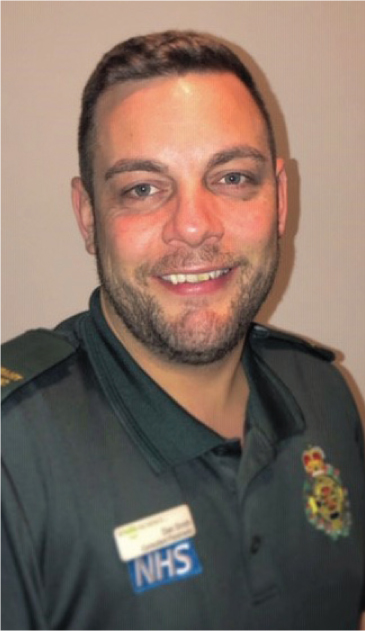
I've previously advocated for us all to celebrate the opportunities that are available within our profession. We should excitedly welcome and embrace the change and offer a commitment to continuing the development of our profession as far as possible—or should I say, as far as safely possible? It is said that only the limitations of our own vision or imagination restrict progression and it's true that much is achieved through passionate determination.
Two incidents in the last month have made me pause and consider the following: as a profession, are we ready for this? Can we adequately support the diverse range of paramedic roles? Should we be a little more cautious as we develop the roles of the future?
List in your minds some paramedic roles and you may start with the more traditional: critical care, HART or HEMS. Perhaps you drift towards advanced practice, primary or urgent care. There are many who have chosen a less-than-traditional career pathway and will always identify as a paramedic. As a profession, do we know where these clinicians are and what they are doing? If not, how as a professional group are we supporting them?
An NHS website describes paramedics as ‘senior ambulance service healthcare professionals at an accident or a medical emergency. Often working by themselves, paramedics are responsible for assessing the patient's condition and then giving essential treatment. They use high-tech equipment such as defibrillators, spinal and traction splints and intravenous drips, as well as administering oxygen and drugs.’
This is so far from the truth nowadays, it could be insulting, but it's worse; it's dangerous because it misrepresents our profession and that means our professional pioneers could be isolated, alone and unsupported by a developing profession.
The two incidents that led me to contemplate our professional role were, sadly, routine in many ways. The first involved a mental health crisis, with a significant and tragic personal history. There was an obvious need for care but the struggle to negotiate assessments stretched to 5 hours of committed care. What struck me was the expertise deployed by paramedics—not in providing that care, but in negotiating the next steps and access services. It was evident, that this was not the first time they had needed to navigate a complex system and advocate for a patient, and they did it all without the use of high-tech equipment such as a traction splint!
The second incident involved some pretty awful safeguarding disclosures. Any emotional distress experienced by me was clearly overshadowed by that of the entire family coming to terms with was happening. As I drove away from both incidents, I reflected and my thoughts turned to what was next for these two patients and the professionals charged with their care. Whoever cared for them next would need to really delve into the history, understand what they had endured and guide or support them through the dark times ahead.
I am not sure I would be able to do that. While my clinical care of patients carries its own challenges, we are often somewhat protected from the harsh realities carried by some of our patients—and, as selfish as this may sound, that suits me just fine.
As a Consultant Paramedic, I have some responsibilities to ensure our teams are equipped to safeguard the vulnerable; I need to ensure our clinicians can recognise it, and know how to use the systems for reporting it. I need to ensure that we learn from incidents and share good practice. It is a responsibility that I could not even begin to get to grips with without our amazing safeguarding practitioner—a paramedic who has chosen to specialise in safeguarding and carries a workload that most of us would try to avoid at all costs.
For an hour, every month, I listen as our safeguarding practitioner briefs the team on our open cases; incidents of domestic homicide, serious case reviews, abuse situations that thankfully most people could not even begin to imagine and, of course, we look at lessons we can learn for the future.
At the end of their briefing, I thank them for their time and for the job that they do, because I have always felt that the ‘worst’ incidents are the ones where a human has undertaken to hurt or harm a fellow human, especially if that harm results out of a vulnerability. Thankfully, for an individual clinician, those incidents are fairly rare, with the really extreme cases experienced perhaps once or twice in a career—yet for our safeguarding practitioner, this is the day job. Every possible case finds its way to their desk; it's understood in intimate detail and lessons are extracted. I hope that our safeguarding practitioners recognise the good they are doing and the hope they bring to vulnerable people.
The value that these specialist roles bring to the profession probably remains a mystery; what they bring to the patients they manage is, I hope, more appreciated and understood. For me, our challenge as a profession is to understand our specialty paramedic roles in more detail and ensure, as a profession, that we do what we can to prepare and support them.

